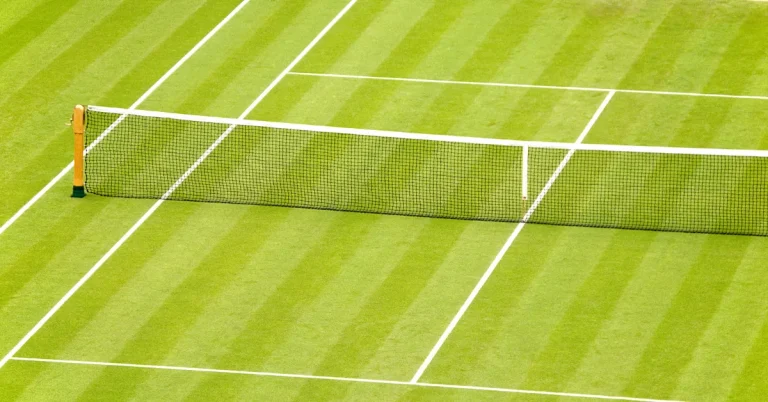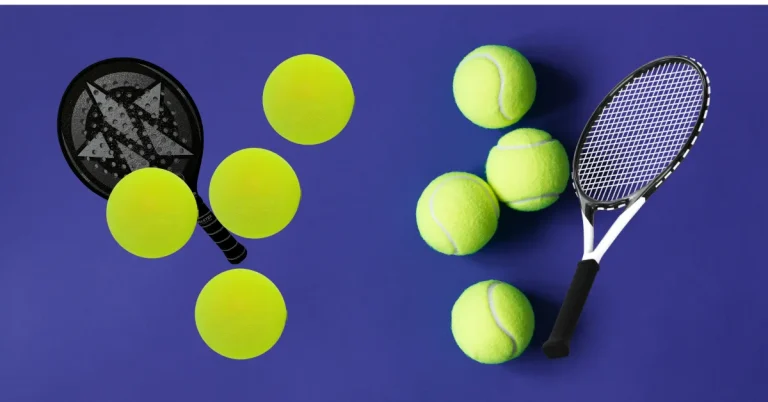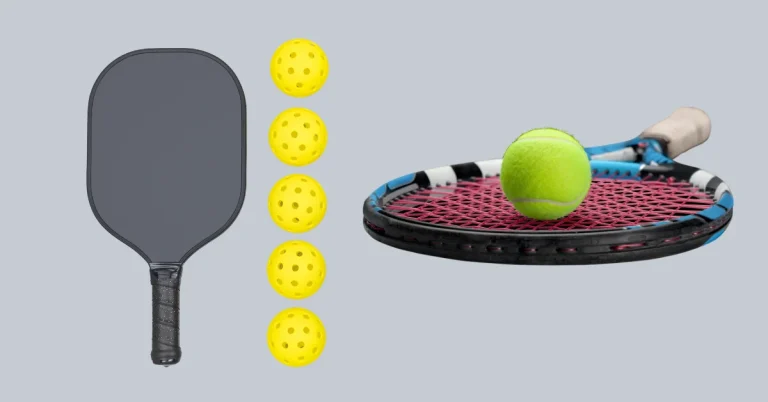The History of Tennis: A Journey Through Time
From the royal courts of England to the clay courts of Roland Garros, tennis has evolved into a global phenomenon that captivates millions. This journey through time highlights the key developments, iconic players, and the game’s profound impact on sports and culture worldwide.
Origins of Tennis
The roots of tennis stretch deep into history, originating in 12th century France with a game known as “jeu de paume” (game of the palm). This early form of tennis was played in monastic cloisters and royal courts, where players used their hands to hit a wooden ball back and forth. The game quickly became a favorite pastime among French nobility.
By the 13th century, the popularity of jeu de paume had spread across Europe, with courts being constructed in England, Spain, and Italy. These early courts were roughly 90 feet in length, similar to the modern tennis court length of 78 feet, but their widths varied. The surface was usually grass or packed earth, providing a much different bounce and pace compared to today’s hard and clay courts.
The significant turning point in the evolution of tennis equipment came in the late 15th to early 16th century with the introduction of the tennis racket. Crafted from solid wood and strung with gut strings, these rackets allowed for greater control and power, transforming the game. The balls, originally made from solid wood, evolved to be crafted from leather stuffed with bran, offering more bounce and variability in play.
Another notable advancement was the standardization of the indoor tennis court size in the 16th century, which was formalized at 90 feet long by 30 feet wide. This period also saw the creation of more sophisticated playing strategies and the first codification of the rules, laying the groundwork for what would later evolve into lawn tennis. It was during this era that the game transitioned from jeu de paume to what was known as “real tennis,” played within enclosed courts and considered a precursor to the modern game.
The transformation from jeu de paume to real tennis, and eventually to what we recognize today as tennis, was gradual but profound. Real tennis thrived among European nobility, becoming highly popular in England, where it developed its own unique rules and equipment. By the end of the 16th century, tennis had become an established sport with a burgeoning set of rules and equipment, setting the stage for its evolution into the global sport loved by millions. The leap from real tennis to lawn tennis in the late 19th century opened the game to wider audiences and laid the foundation for modern tennis as we know it today.
Birth of Lawn Tennis
The pivotal transformation from real tennis, a game once confined within the walls of royal courts and monasteries, to lawn tennis, a beloved global sport, marked a significant chapter in the history of tennis. This transformation was initiated in the late 19th century by Major Walter Clopton Wingfield, a British army officer with a deep passion for sports and innovation. In 1873, Wingfield patented a game he called “Sphairistikè” (Greek for “playing ball”), laying the foundational stones for modern lawn tennis.
Wingfield envisioned tennis as an outdoor sport, making it particularly appealing to the British gentry with the means to develop lawn courts. Initially, these courts featured an hourglass shape, narrower at the net and expanding towards the baseline, a design that would eventually evolve into today’s rectangular courts. The first lawn tennis courts measured 60 feet by 30 feet at the baseline, slightly smaller than the contemporary standard tennis court length of 78 feet.
The choice of grass as the playing surface was both a tribute to the traditional English garden and a practical decision. Grass was readily available and simpler to maintain than the clay or hard surfaces typical of real tennis, leading to a game with a distinctly different pace. The softer, natural surface of grass courts offered a slower ball speed, fundamentally altering the dynamics of play.
Equipment for Wingfield’s version of tennis also underwent innovation. Rackets, similar to those in real tennis but designed for outdoor use, were made of wood with tightly strung sheep gut. The introduction of rubber balls, a novel material at the time, provided enhanced bounce and durability suitable for lawn play. In his 1874 booklet, “The Major’s Game of Lawn Tennis,” Wingfield introduced a set of rules to standardize gameplay and scoring, including the scoring method still used today with points of love, 15, 30, and 40, and the concept of alternating service between players.
While Wingfield played a crucial role in popularizing lawn tennis, it was the establishment of the All England Croquet Club in Wimbledon in 1868, which later became the All England Lawn Tennis and Croquet Club, that solidified the sport’s status. The first Wimbledon Championship in 1877 introduced the standardized rectangular court and further refined the rules, transforming lawn tennis into the competitive and cherished sport known worldwide.
Evolution of Equipment in the History of Tennis
As the history of tennis unfolded, the evolution of its equipment has been a testament to the sport’s innovation and adaptation. The journey from the rudimentary gear of the early days to today’s high-tech equipment highlights significant milestones that have shaped tennis into the fast-paced game we know and love.
The tennis racket has seen perhaps the most dramatic transformation. Initially crafted from solid wood, these rackets were heavy and offered limited power and control. The late 19th and early 20th centuries witnessed the introduction of laminated wood rackets, incorporating layers of wood glued together for improved strength and flexibility. The real game-changer came in the latter half of the 20th century, with the introduction of metal frames, followed by the revolutionary carbon fiber models. These advancements allowed for lighter, more durable rackets with larger heads, enabling players to hit the ball with greater speed and precision.
Tennis balls have also evolved, from the early versions made of cloth strips stitched together and filled with feathers or hair, to the rubber balls introduced in the late 19th century. The development of pressurized air-filled balls coated with felt significantly altered the game’s dynamics, providing more bounce and enabling a wider range of shots. This innovation in ball design has continually been refined to suit different court surfaces and playing conditions, enhancing both playability and spectator enjoyment.
The evolution of tennis apparel reflects changes in societal norms and advances in material technology. The early days of tennis saw players donning long-sleeved shirts, flannel trousers, and even corsets, restricting movement and comfort. The transition to shorts and skirts, followed by the introduction of synthetic, moisture-wicking fabrics, has allowed players to compete at their highest level with greater comfort and mobility. Today’s tennis shoes are designed with advanced cushioning and support, tailored to the demands of rapid directional changes and the specifics of various court surfaces.
This remarkable evolution of equipment in the history of tennis has not only paralleled the sport’s development but has actively propelled it forward. Each innovation in rackets, balls, and apparel has opened new avenues for tactical and technical advancements, making tennis a dynamic showcase of athleticism and strategic depth.
Modern Game Developments
The landscape of tennis has been significantly transformed by technological advancements and changes in both scoring systems and rules, making the game more engaging, fair, and dynamic than ever before. These developments reflect the sport’s adaptability and its continuous evolution to meet the demands of players, fans, and broadcasters worldwide.
- Hawk-Eye Technology: Introduced in the early 2000s, Hawk-Eye uses high-speed cameras to track the trajectory of the ball and graphically represent its landing spot. This technology provides an unbiased, instant review system, reducing human error in line calls and enhancing the accuracy of officiating.
- Electronic Line Calling: Building on Hawk-Eye, full electronic line calling systems now automate all line calls during matches. This technology not only ensures precision but also speeds up the game by eliminating the need for manual line judge reviews.
- Scoring Innovations: The introduction of tie-breaks in the 1970s to decide sets at a 6-6 scoreline revolutionized scoring, making matches more predictable in length and adding a thrilling climax to closely contested sets. The more recent introduction of the match tie-break (also known as the super tie-break) in deciding sets of doubles matches and some singles matches further adds to the drama and spectator enjoyment.
- Shot Clock: The shot clock ensures a consistent pace of play, enforcing a strict time limit between points. This rule aims to prevent delays, ensuring matches progress smoothly and align with broadcast schedules.
- On-court Coaching: Recently experimented with in various tours, on-court coaching allows players to receive advice from their coaches during matches. This development has sparked debate about the traditional independence of players on the court, offering a new dynamic to the game’s strategy.
- Instant Replay and Challenges: Players now have the ability to challenge line calls, using instant replay to review disputed points. This feature not only adds an element of strategy regarding when to challenge but also increases the transparency and fairness of match officiating.
These advancements in technology and changes to the game’s rules and scoring systems have been pivotal in modernizing tennis. They cater to the evolving landscape of competitive sports, where accuracy, fairness, and entertainment value are paramount. As tennis continues to embrace innovation, it remains at the forefront of sports, offering an ever-improving experience for players and spectators alike.
Grand Slam History
The Grand Slam tournaments are the most prestigious events in the tennis calendar, each with its own rich history and unique challenges. These tournaments represent the pinnacle of achievement in the sport, attracting the world’s best players to compete on the biggest stages. Here’s a brief overview of each:
- Wimbledon – Established in 1877, Wimbledon is the oldest tennis tournament in the world and is held at the All England Lawn Tennis and Croquet Club in London. Known for its grass courts, strict dress code, and the iconic serving of strawberries and cream, Wimbledon embodies the tradition and elegance of tennis.
- The US Open – First held in 1881, the US Open takes place at the USTA Billie Jean King National Tennis Center in New York. It’s famed for its hard courts, electric night sessions, and vibrant atmosphere that reflects the energy of its host city.
- The French Open – Also known as Roland Garros, after the stadium where it is hosted, the French Open was first played in 1891. It is the only Grand Slam played on clay, a surface that slows down the ball and makes for longer, more physically demanding matches. Its Parisian setting adds to the tournament’s charm and challenge.
- The Australian Open – Known as the “Happy Slam” for its friendly and laid-back atmosphere, the Australian Open was established in 1905 and is held at Melbourne Park. It features hard courts and is notable for its extreme heat conditions, testing players’ endurance and willpower.
Together, these tournaments offer a comprehensive test of a player’s skill, adaptability, and mental toughness, each contributing uniquely to the sport’s storied history. Winning a Grand Slam is considered the highest achievement in tennis, with a career Grand Slam, winning all four tournaments over the course of a career, being an even more coveted feat.
Iconic Players and Matches
The annals of tennis history are adorned with players whose skill, determination, and charisma have transcended the sport, leaving a lasting legacy. Billie Jean King’s landmark victory in the “Battle of the Sexes” match not only showcased her incredible talent but also championed the cause of gender equality in sports. Rod Laver’s unparalleled achievement of winning the Grand Slam twice, in 1962 and 1969, remains a pinnacle of individual excellence in tennis.
In the modern era, Serena Williams’ dominance on the court, highlighted by her 23 Grand Slam singles titles, has shattered records and redefined the game for women. Roger Federer, with his record 20 Grand Slam singles titles, epitomizes grace and precision, enchanting fans with his play and sportsmanship. His rivalries with Rafael Nadal and Novak Djokovic have given tennis some of its most thrilling moments. Nadal, known as the “King of Clay,” has an unmatched 13 French Open titles, showcasing his indomitable spirit and tenacity. Djokovic, with his 20 Grand Slam titles, is celebrated for his incredible athleticism and mental fortitude, completing a Career Grand Slam and holding the record for the most weeks at number one in the ATP rankings.
One of the most memorable matches in tennis history is the 2008 Wimbledon final between Federer and Nadal, often hailed as the greatest match ever played. This epic battle, lasting nearly five hours, showcased the sheer brilliance and competitive spirit of both players, with Nadal emerging victorious in a thrilling five-set match.
These iconic players and their landmark matches have not only contributed to the rich tapestry of tennis history but have also inspired countless individuals to pick up a racket and aspire to greatness on the court.
Tennis’s Global Impact
Tennis has transcended sports, influencing global culture and society. Its global reach and the diversity of its champions have made it a powerful platform for promoting values such as resilience, fairness, and equality.
As we reflect on the rich history of tennis, from its humble beginnings to its status as a global sport, we recognize the contributions of countless individuals who have shaped its evolution. Their innovations in tennis rackets, shoes, and balls, along with the iconic Grand Slam tournaments, have made tennis a beloved sport worldwide.
Ready to dive deeper into tennis history or looking for the latest in tennis gear and apparel? Explore our website for more content on tennis strategies and gear reviews. Join our community today by following us on social media and elevate your game!
















